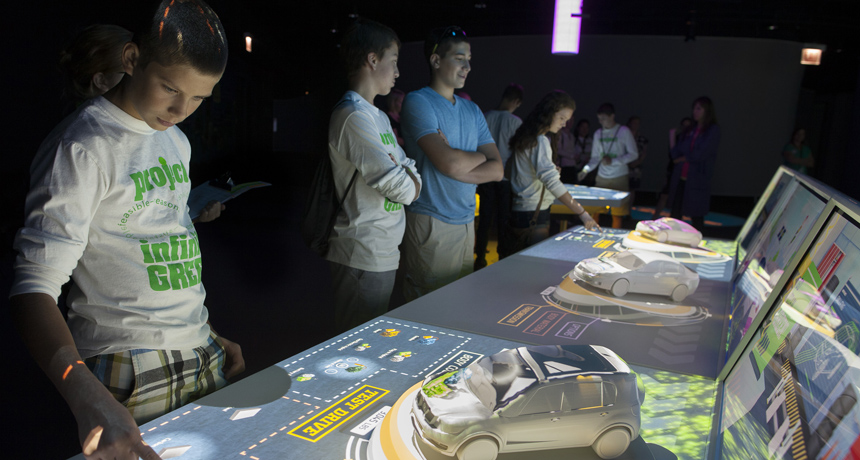For Teachers: Designing a virtual energy future

Visitors make their own choices to design an energy efficient car a new energy exhibit at Chicago’s Museum of Science and Industry.
J.B. Spector/Museum of Science and Industry
CHICAGO — Imagine you could design a house, car or city. What would be the most energy-efficient way to do it? What features would help reduce power use in that house? How would you design an effective — but low cost — transportation system? These are just a few of the questions that people will need to think about as they revamp plans to power our future.
The Museum of Science and Industry, here, has a new exhibit to help kids understand where electricity comes from, how we use it — and how we waste it. Aimed at 10- to 14-year olds, Future Energy Chicago lets visitors choose what kind of energy they would like to see used in homes, cars and cities in decades to come. It also teaches young people the potential consequences of their power choices.
Patricia Ward is the museum’s director of science and technology. She described the exhibit February 14 at the annual meeting of the American Association for the Advancement of Science.
Future Energy Chicago takes electricity education to the next level with a collaborative game. Visitors divide themselves into five teams. Each group competes against the other teams at five stations, trying to create the most energy-efficient environment, transportation system or auto design. But to keep kids from going wild, each team is given the same, fixed budget. The game updates costs of raw materials frequently to reflect their changing real-world prices. The museum’s staff guides groups through the game, providing context and background on energy systems. There are many different choices for each station, with no one right answer. The goal is to make young museum-goers engage with energy and learn about the challenges cities face in paying for it.
The museum has also developed teaching resources for school groups, with materials that teachers can use before and after classes visit the new exhibit. Those materials are compatible with the Illinois science standards and the Next Generation Science Standards.
Teachers will be able to keep the scores that their students receive as they take part in the Future Energy game. Those scores could help educators identify where to focus their lessons after that museum visit. The teaching materials also will include information on the many different careers that could prove pivotal if communities are to efficiently power their future energy needs.
Ward says that responses to the exhibit have been overwhelmingly positive, thus far. “This is an arena kids are familiar with,” she explains. “The game style and approaches are familiar to them.” The museum consulted with groups of both teachers and students as they designed the new exhibit. She hopes that kids will find Future Energy interesting and compelling and take home the message “that everyone needs to work together to make an efficient future.”